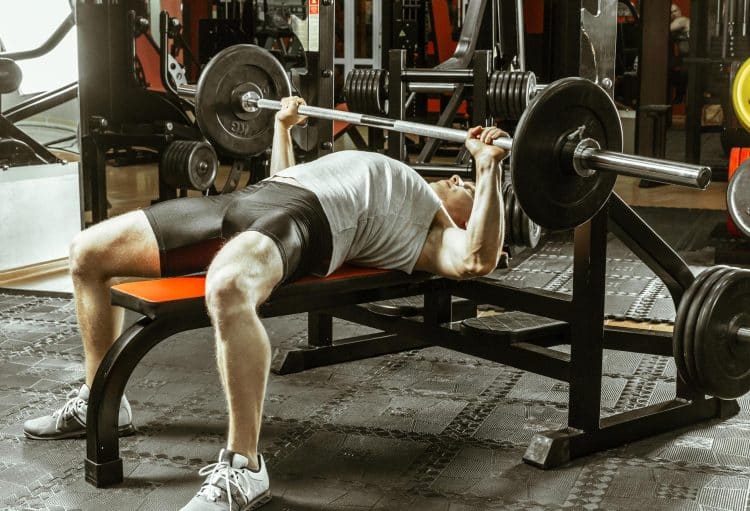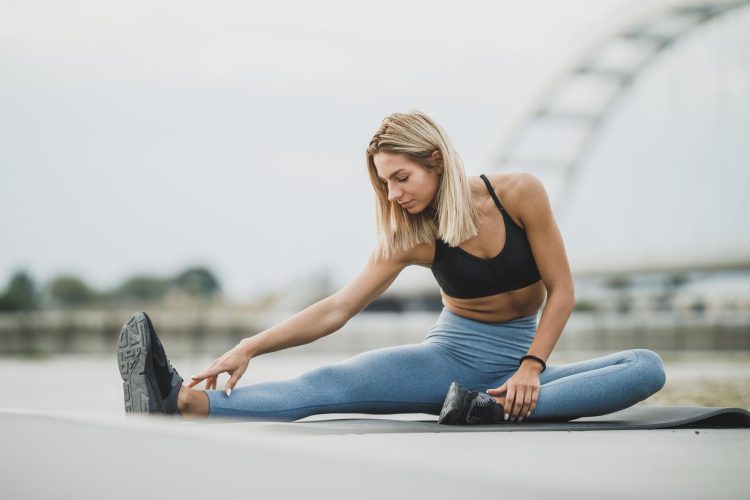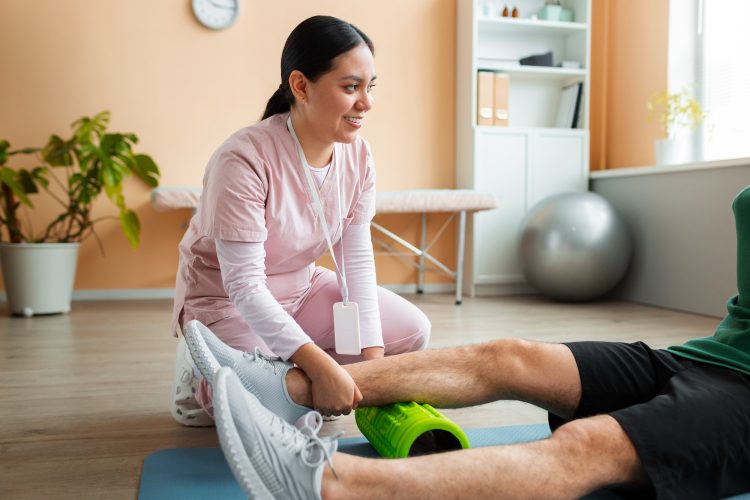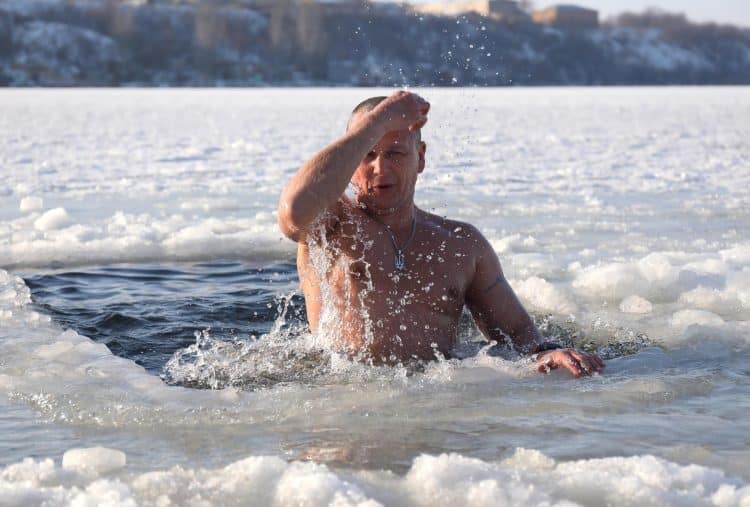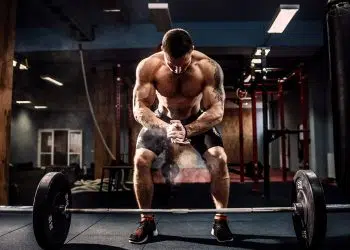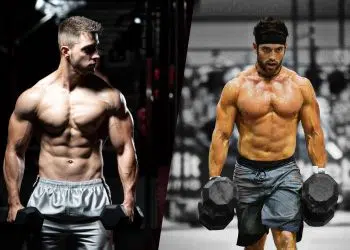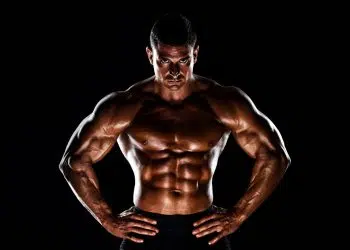Physiotherapy can help you recover from injuries. Countless studies, including a systematic review and meta-analysis from 2012, concluded that even something as simple as a massage can expedite recovery and mitigate muscle soreness. (1)
To help you better understand how physiotherapy helps you recover and perform better, we’ll discuss various physiotherapy techniques and their practical applications for regular gym-goers and athletes.
Effects of Physiotherapy on Muscle Recovery and Injury Rehabilitation
Physiotherapy is undoubtedly beneficial for muscle recovery and injury rehabilitation, but there’s more to it.
From what I’ve seen over the years, the effects of physiotherapy are two-fold.
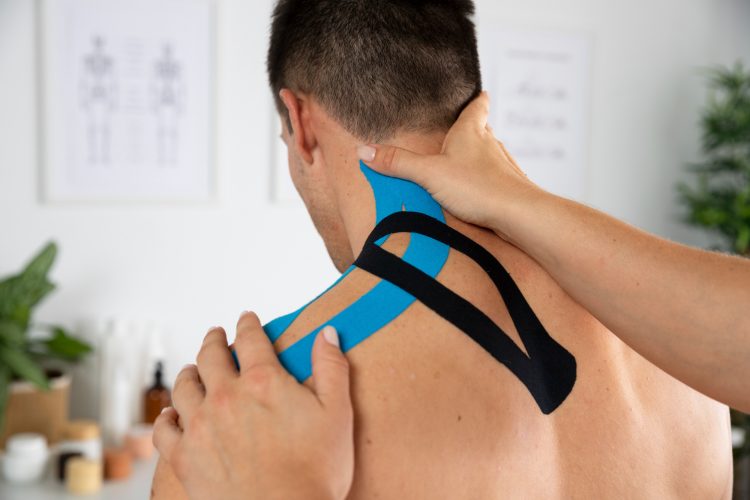
Accelerated Healing and Pain Management
Physiotherapy helps people recover from injuries and ease pain, using proven techniques and methods like lightweight exercises, massages, hot-and-cold therapy, and controlled movement.
Level Up Your Fitness: Join our 💪 strong community in Fitness Volt Newsletter. Get daily inspiration, expert-backed workouts, nutrition tips, the latest in strength sports, and the support you need to reach your goals. Subscribe for free!
At the heart of it all lies manual therapy, like massages or manipulation, which boosts blood flow to the injured areas. This increase in blood flow brings more nutrients and oxygen to the affected muscle tissue, promoting healing.
Yet, those aren’t enough. Incorporating exercises and stretching is equally important.
Several years ago, I had a client with lower back pain. After analyzing his condition, his physio and I created a custom program involving movements like cat-cow, glute bridge, and seated spinal twists to treat the pain. We also recommended eliminating heavy lifting, getting weekly massages, and electrical therapy to help the muscles heal.
The client showed significant improvement within a few weeks, and his injury healed fully.
Functional Recovery and Injury Prevention
Functional exercises, recovery, and injury prevention are the aspects of physiotherapy I have always been most interested in. These exercises focus on (re)building a particular muscle function by mimicking sport-specific movements (or even daily activities), ensuring the muscle rebuilds correctly.
During my time at JC Ferrero Equelite (Spanish Tennis Academy), I worked closely with physios and coaches who emphasized performing simple movements like flexion and extension exercises for wrists, elbows, and shoulders.
Of course, these were done by young and healthy tennis players, but the same exercises are the pillars of functional recovery programs for tennis players.
What’s fascinating about this is that by performing these rehabilitation movements, either with resistance bands or very light weights, these young tennis players actively bulletproof their joints.
Another exciting aspect of injury prevention through functional training is that it helps enhance an individual’s body awareness. It only takes one set of shoulder pass-throughs for someone to realize whether they have mobile shoulders. A set of the butterfly stretch will show how stiff your hips and adductors are.
Functional movements will help you realize how your body works, how it moves, what it can and can’t do, and what hurts and feels good. All of these can lower the risk of injury.
How Can Physiotherapy Prevent Injuries?
The key to reducing the risk of muscular and soft tissue injuries lies in strengthening muscles and surrounding tissues (tendons, ligaments) by engaging in life- or sport-mimicking movements and relying on exercises tailored to your particular needs.
Merely adhering to a series of stretches and banded exercises, as discussed earlier, is not enough. Physios must also analyze their patients’ movement patterns.
Movement analysis is a deep dive into movement patterns and habits. It focuses on locating existing quirks or imbalances that might cause problems, such as overuse of compensatory muscle groups or future injuries.
For example, a significant muscular imbalance between the dominant and non-dominant sides is common for untrained individuals or with sedentary lifestyles. If not addressed, these imbalances could cause various injuries during strength training.
I took on a client several months ago, and the difference in strength between his left and right shoulder and bicep was tremendous — over 15%. This was very evident when he performed a barbell bench press. His left arm lagged significantly after only 2-3 reps, causing him to arch and twist his back to push through, which is a recipe for a back muscle spasm or a massive knot. After I saw that, I switched him over to dumbbells.
If I had noticed an imbalance in the legs, too, we’d do split squats or single-leg step-ups to strengthen the weaker muscles.
These same principles apply to physiotherapy. Upon identifying the issues, physiotherapists will develop personalized exercise plans to fix strength imbalances, improve flexibility or mobility where needed, enhance overall coordination, and minimize strain or overuse on any muscle group. (2)
The Impact of Physiotherapy on Physical Performance
Physiotherapy can play a crucial role in enhancing an athlete’s physical performance.
The impact of physiotherapy on physical performance is massive, but its advantages mostly revolve around the following four elements:
Mobility
Physiotherapy improves mobility by employing techniques that enhance the range of motion and movement quality.
Exercises like lunges with torso twists can drastically improve hip mobility, allowing for quicker turns, more powerful punches and kicks, and various other movements. Additionally, exercises like arm swings and face pulls can enhance shoulder mobility. That, in turn, can improve the performance of athletes such as tennis and volleyball players.
However, the benefits of improving mobility extend beyond athletics.
Many bodybuilders struggle with mobility. However, sporadically incorporating mobility training, especially during the off-season, could do wonders for their overall performance and well-being.
Increased Flexibility
Stretching exercises, including PNF stretching and self-myofascial release, can help increase tissue elasticity. In fact, I’ve seen people go from barely being able to touch their ankles to touching their foreheads to their knees. All they did was hamstring stretches, light yoga, and self-myofascial release.
To be fair, neurological blockades can cause some flexibility issues, so not everyone can go from rigid to flexible. However, adopting a mobility routine can help overcome neurological limitations to a certain degree.
Remember my client with muscular imbalances? He’s also had acute hamstring stiffness. To combat this, we employed a combination of static and dynamic stretches in his exercise routine, which led to noticeable progress over a few weeks.
The flexibility work I just described is also extremely beneficial for athletes in more ways than one.
For example, improving hamstring flexibility through PNF stretching can mitigate the risk of hamstring strains and improve lower back health. Performing knees-over-toes or ATG split squats can improve lower body flexibility and mobility, which in turn can improve running and jumping performance.
According to anecdotal evidence, knees-over-toes squats also bulletproof your ligaments.
Enhanced Strength and Power
Strength training can help you regain strength while recovering from an injury. So, yes, physiotherapy and strength training have a lot in common despite how different they may seem.
In fact, physiotherapists, like PTs or coaches, design customized strength and power training regimens based on treatment areas or muscle groups affected.
In addition, utilizing staple strength exercises like squats and even bench presses, alongside plyometric activities like box jumps and burpees, can help athletes work on their strength and power after any injury.
Builds Endurance
Physiotherapists can develop training programs that boost endurance, effectively strengthening cardiovascular and muscular systems.
In most cases, rehab training regimens comprise low-impact exercises such as cycling or swimming. Swimming is an excellent way to engage your entire body, work on your Vo2 max, and boost your stamina.
Level Up Your Fitness: Join our 💪 strong community in Fitness Volt Newsletter. Get daily inspiration, expert-backed workouts, nutrition tips, the latest in strength sports, and the support you need to reach your goals. Subscribe for free!
Occasionally, physiotherapists may prescribe high-intensity interval training (HIIT) to increase athletes’ aerobic and anaerobic capacities despite such training being the specialty of strength and conditioning coaches.
Either way, with the help of low-impact therapeutical exercises, athletes can sustain peak performance for longer periods, fight off fatigue, and recover quickly between rounds, sets, or matches.
Physiotherapy Modalities for Recovery and Performance Enhancement
Numerous modalities fall within the scope of physiotherapy, each designed with a specific use case and results in mind. Let me tell you a bit about the most notable ones.
Therapeutic Exercises
Therapeutic exercises are the foundation of physiotherapy. They’re designed to improve mobility and strength, restore normal body function, and speed up recovery.
They can also help manage chronic issues or conditions like osteoarthritis.
I’d like to point out that despite what you see on social media these days, therapeutic exercises can be as simple as the knees to the chest movement.
Granted, they could also be complex and consist of several different movements and exercises, but it all depends on the context and individual needs. Personally, I don’t see too much therapeutic benefit from complex movements, so I like to stick to the basics.
One example of a good therapeutic exercise for a knee injury would be a series of strength-building exercises focused on the quadriceps and hamstrings, such as banded leg extensions and leg curls.
Manual Therapy
Manual therapy is a broad term that encompasses everything from massages to mobilization. Like therapeutic exercises, manual therapy aims to minimize pain and maximize function, regardless of whether we’re talking about muscles or joints.
One could expect massive improvements in range of motion and a reduction in pain using manual therapy practices like deep tissue massage. As we mentioned in the beginning, massages have been shown to significantly lower the perception of DOMS after a training session, so manual therapy can help even if you don’t have any injuries.
Mobilization or manipulation techniques can improve a muscle’s range of motion, offering relief in cases of minor sprains or strains.
Electrotherapy
While not as common as manual therapy and therapeutic exercises (at least not among regular gym-goers), electrotherapy is an excellent way to alleviate pain, reduce inflammation, improve muscle function, promote healing, and stimulate nerve function.
The most common electrotherapy modalities are TENS (Transcutaneous Electrical Nerve Stimulation), EMS (Neuromuscular Electrical Stimulation), and ultrasound.
Each has its own set of benefits and is utilized differently, but in general, ultrasound and TENS are used to provide pain relief, while EMS may help with muscle atrophy or muscular strength. For example, EMS might be used to maintain muscle tone during recovery from a strain or a tear in instances where training still isn’t a possibility.
Also, EMS could make a world of difference for people with neuromuscular issues who are looking to improve their quality of life.
Hot-and-Cold Therapy
Hot-and-cold therapy, whether we’re talking about ice packs, saunas, cold plunges, or ice baths, has been a part of the recovery process for decades. It has now become common for athletes to lie in a tub full of ice or ice their knees after a long game or a heavy training session.
Lately, these methods have been popularized by the likes of Andrew Huberman and Joe Rogan and have found their way into the lives of ordinary folks, and for a good reason.
Heat is an excellent way to improve circulation and relax the muscles, while cold exposure can reduce inflammation and DOMS, numb acute pain, and reduce swelling.
Cold exposure could hinder hypertrophy, according to scientific data. However, in our case, we’re only interested in recovery, and that’s where cold therapy shines. (3)
Taping and Bracing
In professional sports, particularly in volleyball and tennis, the use of athletic tape is common. If you’re wondering what the function of that blue tape is, it’s to stabilize and support muscles and joints without restricting movement.
Bracing is equally popular, though it’s mainly used for joint support, as demonstrated by the widespread use of knee and elbow braces in football and basketball.
Taping and bracing are beneficial during the recovery and healing process because they offer stability, which can lower pain.
However, they can also be used as an injury-prevention tool, especially in those with a history of injuries. Derrick Rose, with his troubled knees, and JJ Watt, the retired NFL star who wore an elbow brace after a ligament tear, exemplify how braces can effectively prevent injuries.
Dry Needling
Dry needling stimulates certain trigger points to reduce muscle tension and alleviate pain.
For instance, someone with chronic back pain or a nasty knot in the back might undergo dry needling to ease the tension and break up the knot.
Despite its widespread popularity, dry needling lacks conclusive evidence to establish its effectiveness.
Anecdotal evidence exists, but I would take that with a grain of salt.
How To Make Physiotherapy A Regular Part Of Your Fitness Routine
Most of us don’t need a team of physiotherapists to oversee our physical condition, and we don’t need to invest in a cryo chamber or an overpriced cold plunge tub to avoid injuries and perform better. Instead, we can start small and focus on the basics.
Here’s how you do that:
1. Go For Periodic Evaluations
Intense training can lead to injuries, so being in touch with a physio is a good idea. Not only will they help with the injuries that may have healed improperly, but they will also identify the problem areas, which you’ll then address, thus avoiding additional problems down the line.
2. Perform Therapeutic Exercises and Stretches
Add stretching and therapeutic exercises to your warm-up routine.
Use resistance bands, do yoga, and perform bodyweight exercises before you hit the weights. Preventing injuries is much easier than treating them, and adding simple movements to your warm-up or cool-down will make a world of difference.
You can start with simple exercises like cat-cow stretch, child’s pose, knee-to-chest stretch, and piriformis stretch and work your way up from there.
3. Rest and Recover
Prioritize recovery! I’ve seen way too many people focusing on training while completely neglecting rest and recovery. That’s a recipe for disaster.
Get adequate sleep, go in for deep tissue or a sports massage once or twice a month, and do some hot and cold therapy if you can.
Most gyms nowadays have a sauna, and cold showers are more than enough for you to experience the benefits of hot and cold therapy.
Conclusion
Physiotherapy is much more than just a method to accelerate recovery after an injury. It is an all-encompassing approach to longevity and health, whether you’re an athlete, bodybuilder, or regular gym-goer.
Implementing the pillars of physiotherapy, such as massages, stretching, or hot-and-cold therapy, into your fitness regimen is the best way to avoid injury, recover and progress faster, and improve mobility and flexibility.
Even if you’ve suffered an injury, physical therapy is among the best ways to expedite your recovery.
References:
- Guo J, Li L, Gong Y, Zhu R, Xu J, Zou J, Chen X. Massage Alleviates Delayed Onset Muscle Soreness after Strenuous Exercise: A Systematic Review and Meta-Analysis. Front Physiol. 2017 Sep 27;8:747. doi: 10.3389/fphys.2017.00747. PMID: 29021762; PMCID: PMC5623674.
- Neme JR. Balancing Act: Muscle Imbalance Effects on Musculoskeletal Injuries. Mo Med. 2022 May-Jun;119(3):225-228. PMID: 36035582; PMCID: PMC9324710.
- Roberts LA, Raastad T, Markworth JF, Figueiredo VC, Egner IM, Shield A, Cameron-Smith D, Coombes JS, Peake JM. Post-exercise cold water immersion attenuates acute anabolic signalling and long-term adaptations in muscle to strength training. J Physiol. 2015 Sep 15;593(18):4285-301. doi: 10.1113/JP270570. Epub 2015 Aug 13. PMID: 26174323; PMCID: PMC4594298.

